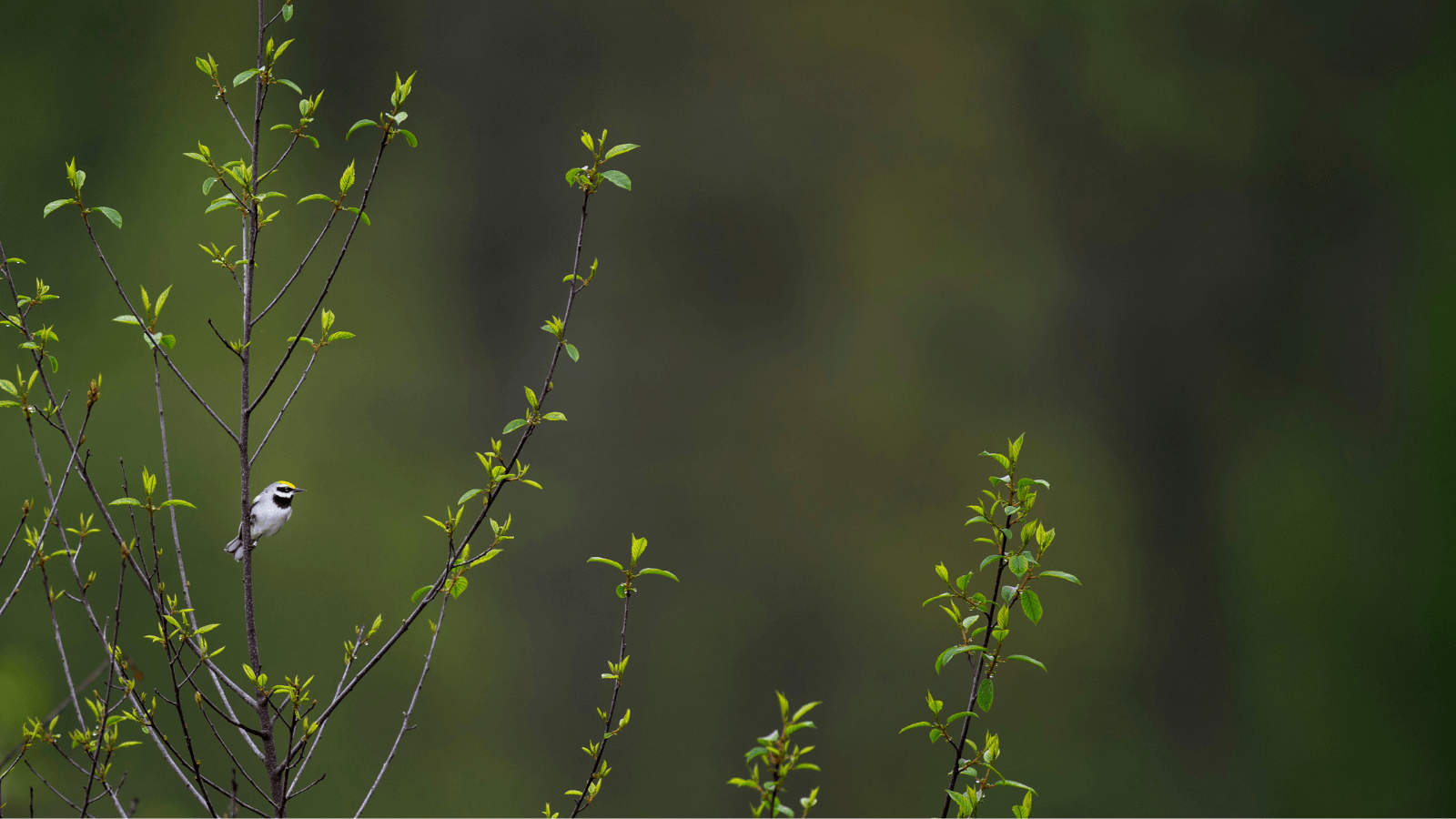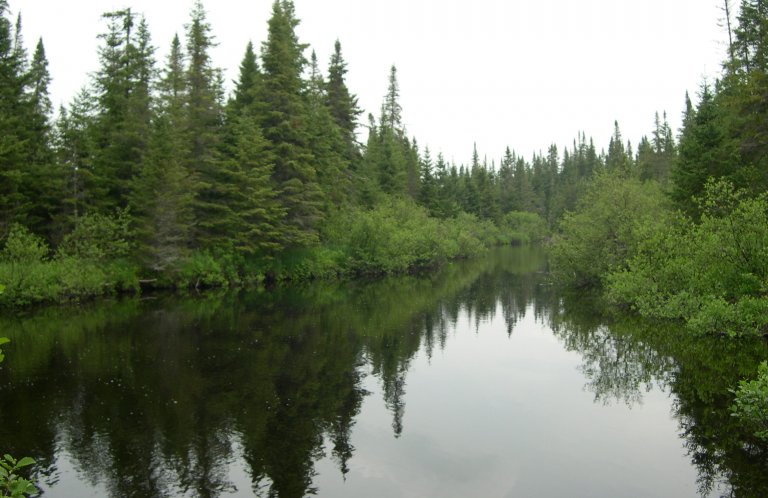Young or Old (or a Bit of Both), Forests are Essential Habitat
This is part of a series of explorations of different kinds of forest biomes found throughout the Western Hemisphere – and how American Bird Conservancy works to conserve them as vital bird habitats. Click to read about tropical forests, temperate forests, and the boreal forest.

Wherever there's a forest, you'll find birds. A dazzling array of birds can be found in the forest biomes that span the Western Hemisphere. In the steamy tropics, relatively stable temperatures and predictable rainfall let life flourish. Seasonality rules in the temperate forests, where cyclical changes prompt some birds to come and go, while others are adapted for snow and sun. And the boreal forest comes alive during its warmest months, welcoming billions of migratory birds for the breeding season.
There may be three major forest biomes, but within each biome are countless kinds of forests to explore. Forests can be defined by the tree species they host, the altitude at which they are situated, their proximity to rivers and lakes, the age of the trees within them, how they are used (or not used) by people … There are endless ways to define a forest, and that variety is essential for many bird species.
Getting the Mix Just Right in Early-Successional Habitats
Sometimes, it isn't just the kind of forest but how old it is and how diverse that matters most to birds. All the forested acreage in a Golden-winged Warbler's breeding territory won't matter much if it doesn't provide the right mix of habitat. In a young deciduous forest habitat without scattered patches of legacy trees (older trees), these birds will only nest at the edge of the site and it will not be as beneficial as those with trees scattered throughout. Though they nest in forested brushland areas or young forest patches, after hatching, young Golden-winged Warblers also leave their nesting habitat and require older deciduous forests where they can easily access caterpillars and the other insects that nourish them before their first migration south.
Habitat dynamism — a diverse range of forest ages among the native plant communities across the landscape — is essential for many bird species. Still, they aren't always using this mix of habitat the same way. Wood Thrush utilize some of the same habitats as Golden-winged Warblers, but they do it in reverse, nesting in older, contiguous deciduous forest areas and opportunistically browsing in young forest patches as they mature. Creating and maintaining a landscape of diverse, connected habitats using science-based best management practices for conservation focal species is essential for helping declining birds such as the Golden-winged Warbler and the Wood Thrush bounce back.
“Healthy wildlife communities need a mosaic of habitats and age classes across the landscape. Diversity at multiple scales, from site-level to landscape-level, is essential to supporting the life-cycle and resource needs required by several species prioritized by ABC's Great Lakes Team,” said Peter Dieser, Great Lakes Public Lands Director. “That diversity isn't just important for focal species like the Golden-winged Warbler — it's beneficial for a broader suite of species that may require a range of habitats at different times throughout their annual life cycles. This dynamism and diversity also encourages overall forest and ecosystem health.”
The vast Northwoods of Michigan, Wisconsin, and Minnesota are critical landscapes for the Golden-winged Warbler and hundreds of other resident and migratory bird species. ABC works collaboratively with public, tribal, and private partners and landowners to help create and maintain a dynamic forest landscape that will support robust and diverse communities of forest birds for years to come.
Old-Growth Forests: Steady But Not Stagnant
While some species need a mix of ages in their vegetation to thrive, others, like the Varied Thrush and Evening Grosbeak, favor the reliability of a mature forest that has grown over a lengthy period without disturbance. Others, like the Northern Spotted Owl, require old-growth forests — the next stage in a mature forest's lifecycle. But don't mistake the term “old-growth” for lacking variety. Tremendous diversity can exist within an old-growth forest. The very nature of their development has enabled multi-layered canopies to form, each hosting birds filling different ecological niches.
Sometimes, the delicate balance of these ecological communities can be thrown off. Food waste at campsites in Pacific Northwest forests is an irresistible draw for the Steller's Jay and Common Raven. The ABC Crumb Clean initiative encourages campers to clean up their food waste when they clear out.
“Corvids are smart. They know they can grab an easy meal from left-behind food at a campsite. Unfortunately, this can also draw them close to where Marbled Murrelets are nesting,” said Lindsay Adrean, ABC's Northwest Program Officer. “Marbled Murrelets lay only one egg each breeding season. Nest predation is natural for Steller's Jays and Common Ravens, but their heavy presence at campsites near murrelet nests can have devastating consequences.”
Many Marbled Murrelets nest in the Pacific rainforest's sturdy firs, spruces, and hemlocks, preferring trees at least 200 years old. Unlike younger trees, these older trees have generous, ready-made nesting platforms and cover provided by the huge trees' branches. Unfortunately, trees of this kind are becoming rarer due to logging and fire, leading causes of the decline of the Endangered Marbled Murrelet.
As climate change exacerbates pressures on many bird species, old-growth forests may provide a refuge for the species most sensitive to rising temperatures. Old-growth forests hold much of the Earth's carbon, and their highly varied tree assemblages can create a climate buffer for some species.
A Final Word on Forests
Forests and the birds who need them are at risk. Habitat loss is the single biggest threat to birds, whether in the form of unsustainable logging operations, overgrazing on agricultural lands, or the conversion of irreplaceable habitat for residential, agricultural or industrial uses. Halting extinctions and reversing declines means addressing root causes, finding solutions to preserve habitat, and encouraging good forest management practices.
Though this was just a peek behind the leaves, it's easy to see that the kinds of forests found throughout the Western Hemisphere are as diverse and dynamic as the birds found within, and just as precious. They're precious to the birds and to those of us who marvel at their beauty and find wonder in wandering through them. Forests are homes for birds and it's on us to protect them using a suite of conservation actions, from managing fire for Kirtland's Warblers to restoring māmane forests for Palila.
Caring for forests means providing a future for birds. You can help conserve forest habitats by making simple swaps, like choosing certified Bird Friendly® coffee and chocolate, tending to your backyard habitat, and supporting ABC's work to halt extinctions, reverse population declines, and reduce threats. Restoring habitat is one way we work to meet those goals. ABC has supported the planting of more than 7.7 million native trees (and counting) where birds need them most in the Western Hemisphere.
This is part of a series of explorations of different kinds of forest biomes found throughout the Western Hemisphere – and how American Bird Conservancy works to conserve them as vital bird habitats. Click to read about tropical forests, temperate forests, and the boreal forest.



















































